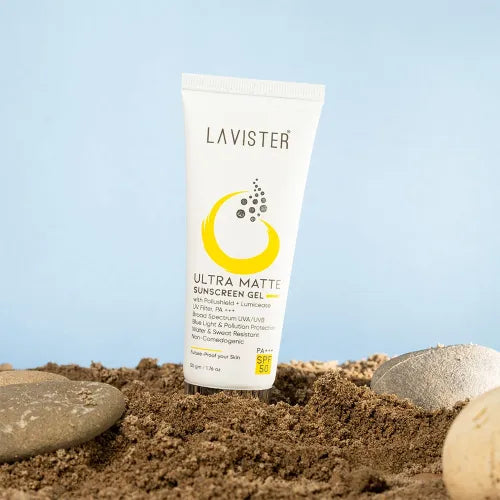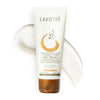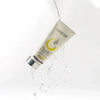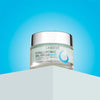How To Apply Sunscreen On Your Face? Common Mistakes To Avoid
During all seasons, sunscreen is your skin’s bestie. Do you prefer matte or gel cream sunscreen?
Sunscreen is always there to protect and support you. Whether it’s sunny, cloudy, or even a frosty winter day, sunscreen is a non-negotiable part of your skincare routine. But here’s the million-dollar question: are you using it the right way?
Here is a comprehensive guide to how to apply sunscreen on face, common mistakes to avoid, and why this essential skincare product deserves a spot in your daily routine.
Why Sunscreen Is Essential
First things first, sunscreen isn’t just for sunny vacations. Harmful UV rays are sneaky and can damage your skin even when it’s cloudy or you’re sitting by a window. Yes, you read it right! UV rays can find their ways indoors via windows and seep into your skin.
Applying sunscreen on face daily helps:
- Prevent sunburn and tanning.
- Reduce the risk of premature ageing, like wrinkles, fine lines, and sagging skin.
- Protect against skin cancer.
- Combat pigmentation and uneven skin tone.
In short, the benefits of sunscreen on your face are endless. Make it a habit today!
How To Apply Sunscreen On Face
There is a beauty to sticking to a skincare routine that includes sunscreen application. You can not simply lather sunscreen over an uncleansed face and expect results. Getting sunscreen application right is key to reaping its full benefits. Here’s a simple to follow step-by-step guide:
1. Start with Clean Skin
Before applying sunscreen, make sure your face is clean and dry. Use a gentle cleanser to remove dirt, oil, or makeup. Wash your face with lukewarm water and pat dry. It’s ready for the next step!
2. Moisturise First
Apply a decent amount of a non-sticky moisturiser. Don't skip your moisturiser if your skin tends to get dry or you have combination skin. It keeps your skin hydrated and ensures that sunscreen layers smoothly. There are sunscreens available with moisturising effects, so make sure they are suitable for your skin type.
3. Use the Right Amount
Are you wondering how much sunscreen is a decent amount or how much sunscreen to apply on your face? The rule of thumb is about two finger-lengths of product for your face and neck. Dispense the sunscreen onto your fingers, dot it evenly across your face, neck, and arms, and then spread it. Use more if you feel like it. Your skin should be completely covered with it.
4. Apply 15-30 Minutes Before Sun Exposure
Many apply sunscreen a few minutes before going out. It is wrong because they are not giving it enough time to get absorbed in the skin properly and form a protective barrier. Apply sunscreen at least 15-30 minutes before stepping out. Overnight application is also effective.
5. Don’t Miss These Spots
When we talk about sunscreen application, we often overlook some areas; like ears, hairline, and the back of the neck. Make sure to cover these spots, too, for complete protection.
6. Reapply Every 2-3 Hours
Sunscreen wears off with time, especially if you are sweating or swimming. Reapply it every 2-3 hours to maintain protection throughout the day.
Common Mistakes To Avoid
Even if you’re applying sunscreen daily, you might be unknowingly making these errors:
1. Using Too Little Sunscreen
A few dabs won’t do the trick. You need enough to fully cover your face, neck, and other exposed areas. Follow the general rule of applying a two-finger length amount, but apply more if you feel like it.
2. Skipping Reapplication
Applying sunscreen once in the morning isn’t enough. Reapply during the day, especially if you’re outdoors or sweating. Keep a travel-friendly sunscreen pack with you at all times.
3. Ignoring Your Body
Your arms, legs, and other exposed skin also need protection. Use a body sunscreen to prevent sun damage beyond your face. Do not forget your ears, hairline, and back of your neck.
4. Forgetting Sunscreen Indoors
Now you know that UV rays can penetrate windows, don’t skip sunscreen even when you are inside.
5. Relying Solely on Sunscreen
While sunscreen is essential, it is not your only defence. Use hats, sunglasses, and protective clothing for extra coverage.
Types Of Sunscreens
Choosing the right sunscreen makes all the difference. Here’s a breakdown of the types:
1. Chemical Sunscreens
These absorb UV rays and convert them into heat. They’re lightweight and easy to apply but need 20-30 minutes to activate. Chemical sunscreens can offer protection against both UVA and UVB rays. They can be a good choice for oily skin.
2. Physical (Mineral) Sunscreens
Mineral sunscreens contain ingredients like zinc oxide or titanium dioxide, which form a barrier on the skin’s surface and reflect UV rays. These sunscreens can also help prevent pores from getting blocked and reduce inflammation. They can be good for acne-prone skin and can also help prevent hyperpigmentation and melasma. They work instantly but can leave a white cast.
3. Hybrid Sunscreens
A mix of chemical and physical sunscreens, offering the best of both worlds.
When choosing a sunscreen, consider your skin type:
- Oily Skin: Opt for lightweight gel or water-based sunscreens.
- Dry Skin: Go for creamy sunscreens with hydrating ingredients like hyaluronic acid.
- Sensitive Skin: Choose mineral sunscreens with soothing components like Cica.
Quick Tips For Effective Sun Protection
- Check the SPF: An SPF of at least 35 is ideal for daily use, while an SPF of 50 is better for prolonged outdoor exposure.
- Go for Broad-Spectrum Protection: This shields your skin from both UVA (ageing rays) and UVB (burning rays).
- Mind the Expiry Date: Expired sunscreen loses its effectiveness, so always check the label before using it.
- Store It Properly: Keep sunscreen in a cool, dry place to maintain its potency.
Benefits Of Sunscreen For Skin
When used correctly, sunscreen can work wonders for your skin:
- Prevents Dark Spots: Blocks harmful UV rays to stop dark spots and prevent new ones from forming.
- Slows Ageing: Protects skin from wrinkles, fine lines, and sagging caused by sun exposure.
- Evens Out Skin Tone: Helps maintain a smooth, radiant, and balanced complexion.
- Protects from Blue Light: Shields your skin from the blue light emitted by phones and laptops.
- Reduces Risk of Skin Cancer: Acts as a barrier against harmful UV rays that can cause skin cancer.
- Keeps Skin Hydrated: Many sunscreens are infused with hydrating ingredients, helping your skin stay soft and moisturised.
- Prevents Sunburn: Shields your skin from painful burns that can lead to peeling and irritation.
- Protects Sensitive Skin: Reduces redness, irritation, and flare-ups in those with sensitive skin or conditions like rosacea.
Final Thoughts
Applying sunscreen isn’t just a skincare step; it’s a daily ritual to protect and care for your skin. Knowing how to apply sunscreen on your face properly, how much to use, and when to reapply can make all the difference in keeping your skin healthy and glowing.
So, make sunscreen your everyday hero. Don’t skip this essential step, whether cloudy, sunny, or wintery. Your skin will thank you.
Protect Your Radiance Daily with Lavister’s Gel Cream Sunscreen

Your skin deserves consistent care, not just on sunny days. This detailed guide explains how to apply sunscreen on face daily, how much to use, and how to avoid common mistakes. Understand the benefits of sunscreen on face, preventing tanning, dark spots, and early ageing, while keeping your skin soft and protected with Lavister’s gel cream formula designed for all skin types.
Sign up to our newsletter to get the best deals and latest product updates.
Trending Blogs
-

Say Goodbye to Dark Spots Before the Festive Clicks Begin
Get festive-ready skin with Lavister’s Pigmentation...
Read More







